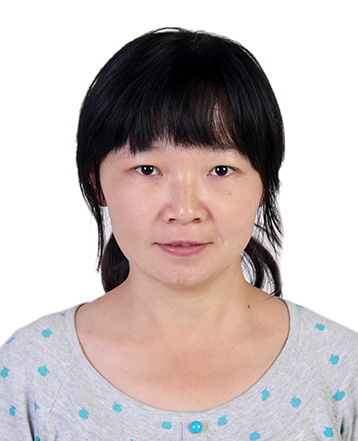
Jian Zeng,Master Tutor, Institute of Modern Physics,Chinese Academy of Sciences
E-mail: zengjian@impcas.ac.cn
Mailing address:Nanchang Road 509, Lanzhou 730000, P. R. China,
Zip: 730000
Tel.: 0931-4969638
Research Areas
Research Areas: The interaction between ions and materials, mainly focusing on the irradiation effects of bulk graphite, nanometer thin layer graphite, graphene and graphene-based devices.
Graphene is a new type of two-dimensional material with unique atomic and energy band structures, which exhibits many exciting properties. The theoretical thickness of graphene is 0.34 nm, which makes graphene to be the thinnest nanomaterials in the world. Its young's modulus (1100 GPa) and fracture strength (125 GPa) are comparable to that of carbon nanotubes. For carriers in graphene, the effective mass is zero, which means that they have the properties of relativistic fermions, and can do submicron level ballistic transport. The intrinsic mobility of carriers is up to 2105 cm2/V·s, which is higher than that of carbon nanotubes and silicon crystals. Therefore, a new generation of graphene based thinner and faster electronic components or transistors are worth to be expected. Graphene have broad application prospect in biomedicine, energy storage materials, quantum computers and super-sensitive sensors, providing a new opportunity for the development of semiconductor and information technology in the future. Therefore, it is necessary to study graphene materials and graphene key devices.
When applied to the irradiation environment, for example, in the application of space devices, more attention should be paid to the influence of complex radiation environment on the performance of graphene devices. Existing studies show that spacecraft electronic components suffers single particle effect, displacement damage effect and total dose effect in space. Theoretical and simulation studies have shown that electron and charged ion incidence can lead to atomic vacancy in the graphene layer, resulting in various forms of atomic defects. Which indicating that graphene lattice can be destroyed in irradiation environments, which may induce the failure of graphene devices.
Swift Heavy Ions (SHIs) provided by the accelerator HIRFL of IMP and Highly Charged Ions (HCIs) offered by 320 kV high-voltage platform of IMP can be used to simulate the space radiation environment. Then the irradiation effect of graphene and graphene-based devices can be studied. The pristine and irradiated samples can be investigated by optical microscope, atomic force microscope, scanning electron microscope, transmission electron microscope, X-ray photoelectron spectroscopy, Raman spectrum and other material analysis methods. Therefore, the investigation of the damage in the material offers the way to understand the interaction between ions and the material. The influence of different ion species, ion energy, electron energy loss, ion flux and different charge states on the irradiation damage of graphite and graphene are investigated comprehensively and systematically. The graphene-based devices are further prepared to investigate the irradiation effects in the electrical properties of graphene. The variation of electrical properties of different types of graphene devices before and after irradiation are investigated. The irradiation damage in the different layers of the devices and the change of interface state between layers are studied to explore the irradiation damage mechanism of graphene-based devices. Our work offers an important reference for the application of graphene-based devices in aerospace electronics.
Education
2009.09—2014.06 Lanzhou University, Doctor's degree
2005.09—2009.07 Southwest University, Bachelor degree
Experience
Work Experience
2016.12 — now, Institute of Modern Physics,Chinese Academy of Sciences, associate professor
2014.07 —2016.12, Institute of Modern Physics,Chinese Academy of Sciences, research assistant
Publications
Papers
(1) Comparative study of irradiation effects in graphite and graphene induced by swift heavy ions and highly charged ions., Carbon, 2016, the first author.
(2) Evidence for re-crystallization process in the irradiated graphite with heavy ions obtained by Raman spectroscopy., Carbon, 2016, the third author.
(3) Bivalent ion transport through graphene/PET nanopore, Applied Physics A, 2016, the third author.
(4) Swift-heavy ion irradiation-induced latent tracks in few-and mono-layer MoS2, Applied Physics A, 2016, the fourth author.
(5) Resonant Raman spectroscopy study of swift heavy ion irradiated MoS2, Nucl Instrum Methods Phys Res, Sect B, 2016, the fourth author.
(6) Raman investigation of lattice defects and stress induced in InP and GaN films by swift heavy ion irradiation, Nucl Instrum Methods Phys Res, Sect B, 2016, the fifth author.
(7) Irradiation effects of graphene and thin layer graphite induced by swift heavy ions., Chinese Physics B., 2015, the first author.
(8) Effects of swift heavy ion irradiation parameters on optical properties of muscovite mica., Nucl Instrum Methods Phys Res, Sect B, 2015, the third author.
(9) Swift heavy ions induced irradiation effects in monolayer graphene and highly oriented pyrolytic graphite., Nucl Instrum Methods Phys Res, Sect B, 2014, the first author.
(10) Ion current rectification effect of porous graphene membrane., physica status solidi (c), 2014, the first author.
(11) Raman spectrum study of graphite irradiated by swift heavy ions., Chinese Physics B., 2014, the third author.
(12) Production of sp3hybridization by swift heavy ion irradiation of HOPG., Nucl Instrum Methods Phys Res, Sect B, 2013, the first author.
Patents
A preparation method of porous graphene composites supported by microporous, a patent for invention, 2016, second author, patent no. : ZL201410145541.3
Research Interests
(1) Study on changes in electrical properties of graphene induced by charged heavy ion irradiation, presided over, national level, 2016.01—2018.12
(2) Phase transition study of geological materials under high-energy heavy ion irradiation under high pressure, participated in, national level, 2015.01—2017.12
(3) Preparation and application of graphene/polymer composite nanopores, national level, 2016.01—2019.12
(4) Interaction mechanism between particles and new nano-device materials, participation, national level, 2017.01—2021.12
Students
已指导学生
马鹏程 硕士研究生 085204-材料工程
